Tag Archives: vr
Meta approved Roto VR chair rotates with your head movements to makes gameplay immersive
Like with other simulators, motion sickness – leading to dizziness and nausea – is common in VR. Some people get uncomfortable when they don a headset and dive into virtual reality. This is because the brain essentially gets disturbed while you stand still and the environment around you moves. This disturbance in brain equilibrium means you begin feeling nauseous or dizzy.
London-based Roto VR is ready to change the game for someone who feels the symptoms with the introduction of a motorized Explorer chair that rotates with the movement of the VR user’s head, making sure there is no indecisive movement in the environment, which the brain cannot register and begins to trigger nausea. Chair intends to make the virtual environment more immersive and less distorting!
Designer: Roto VR
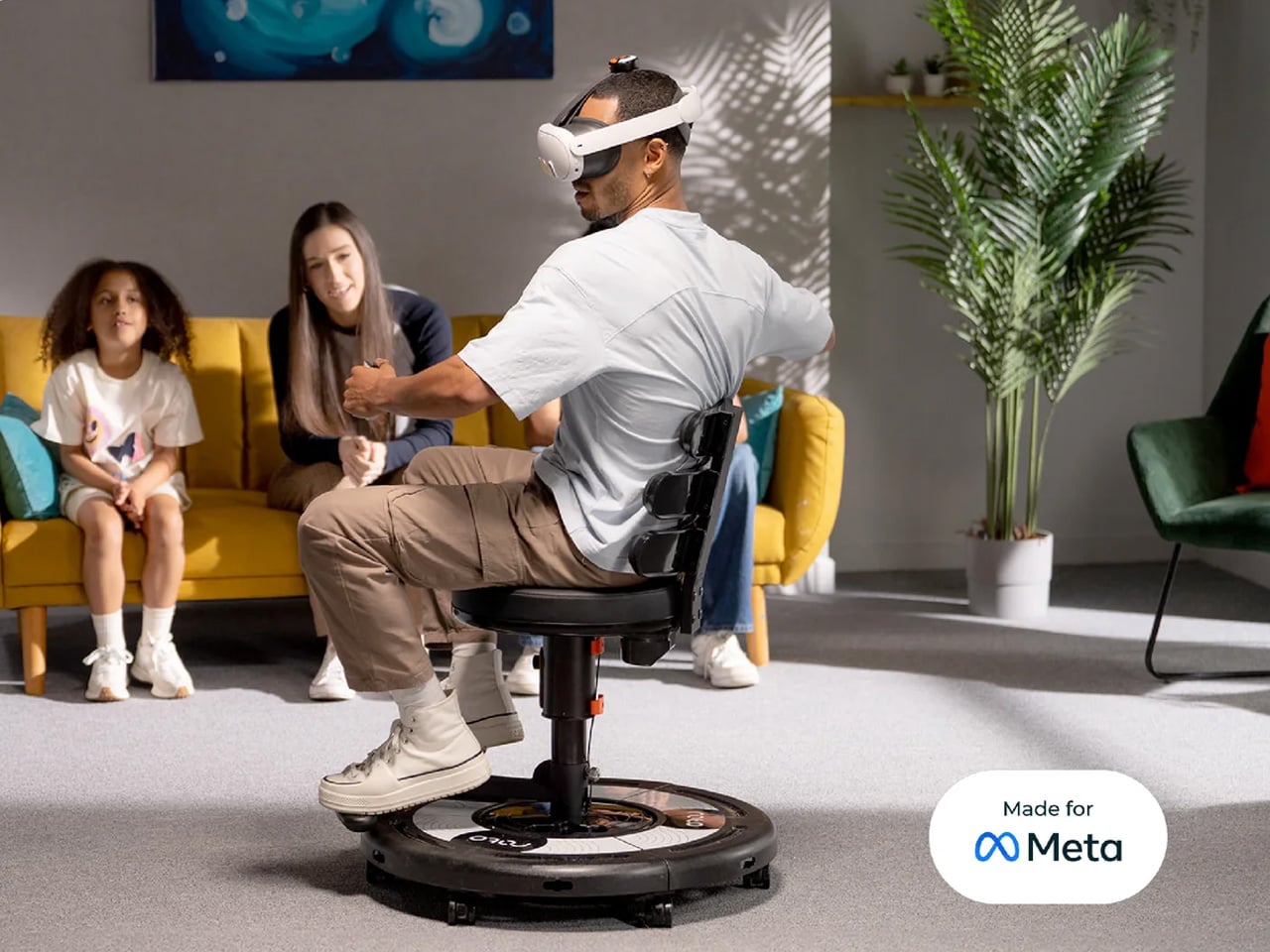
This is a major piece of VR furniture that matches real-world movements with that of the headset. Of course, then it requires a headset to function and would take up a lot of space in your home. But it is significant for all of us who desire complete physical transportation into the virtual world, which is far and above what the headsets have to offer even after evolving rapidly in the last few years.
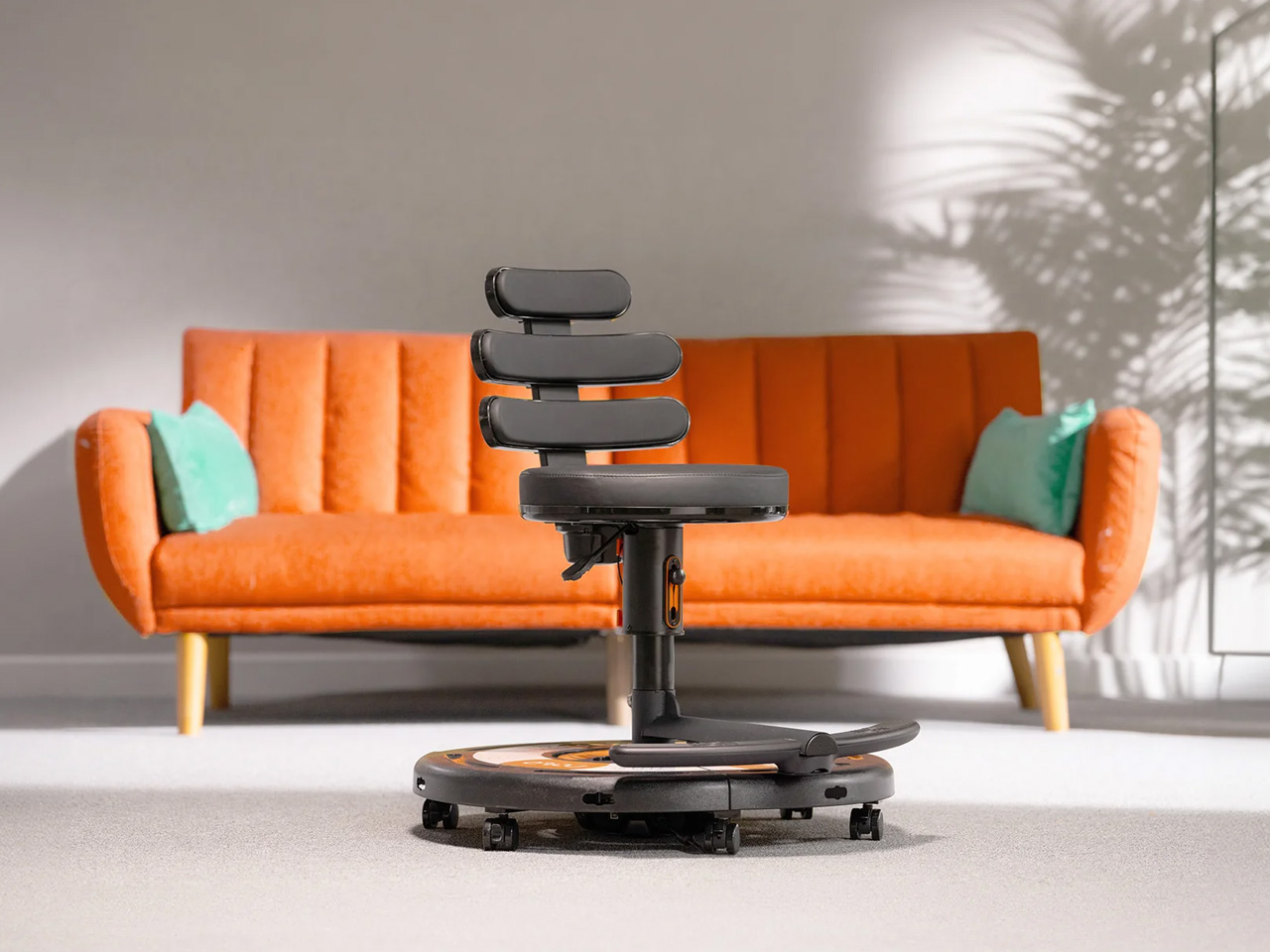
World’s first interactive VR chair, the Roto VR Explorer, is a sophisticated motion device that provides haptic feedback to the body. The chair looks pretty ordinary until you gawk at its round base integrated with an electric motor. This base rotates the chair 360-degrees at up to 21 revolutions per minute (though the speed matches the intensity and speed of the user’s head). Slow head movement, equally slow rotation, and the faster the movement, the quicker it spins until reaching the top speed.
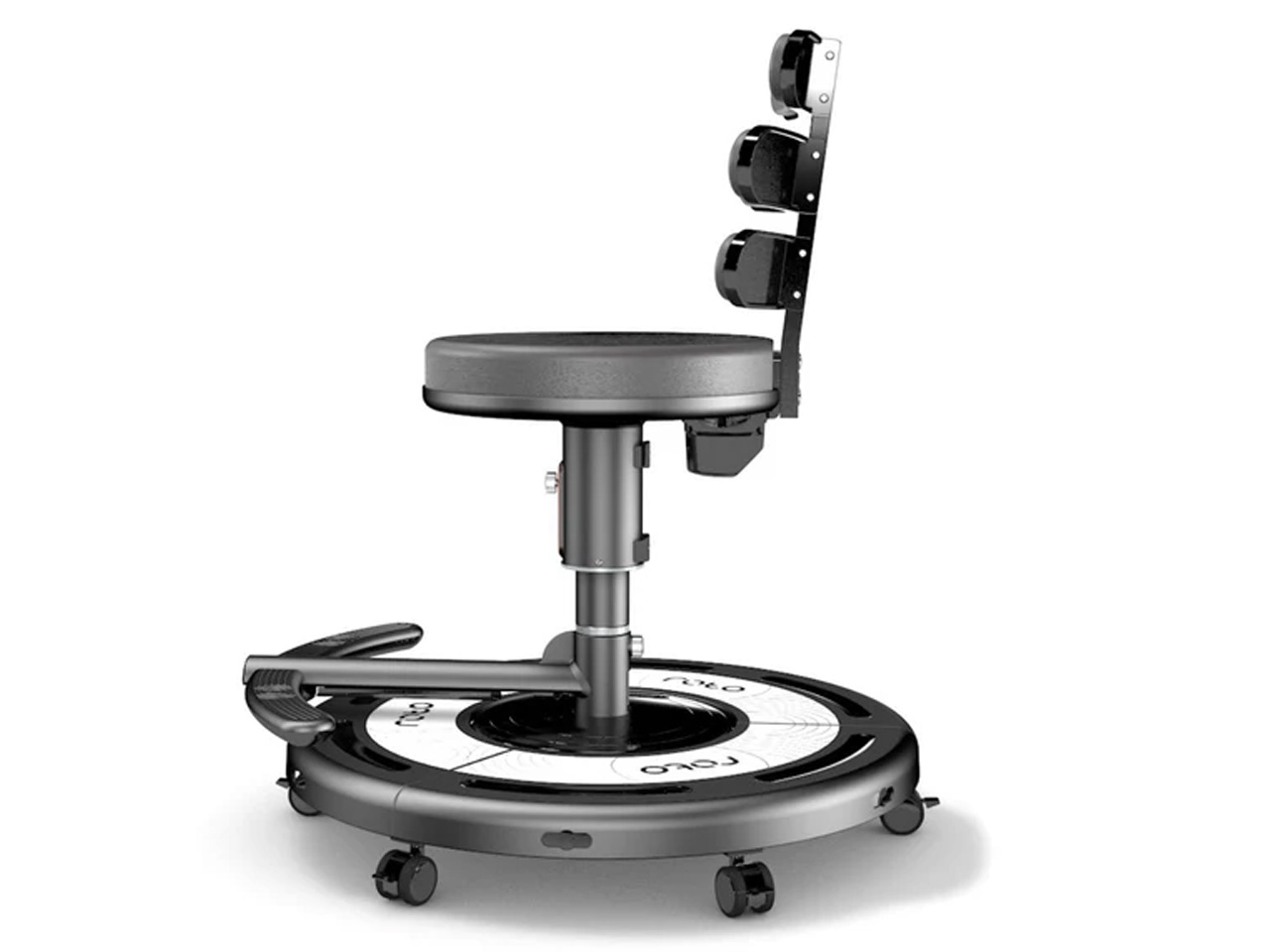
The chair spins in the direction of the head of the user with a Meta Quest headset on. The head strap of the Quest is attached to a dedicated Roto head tracker, which can capture the motion and head movement for precise motion tracking. Interestingly, the Roto VR Explorer chair is provided with the “Made for Meta” stamp, substantiating that the device is authorized by Meta and meets all industry standards. That said, the rotation of the chair is triggered by the motion sensing tracker attached to the headset, which suggests that the chair can be used with other headsets as well and there is no rigidity despite that Meta earmarking.
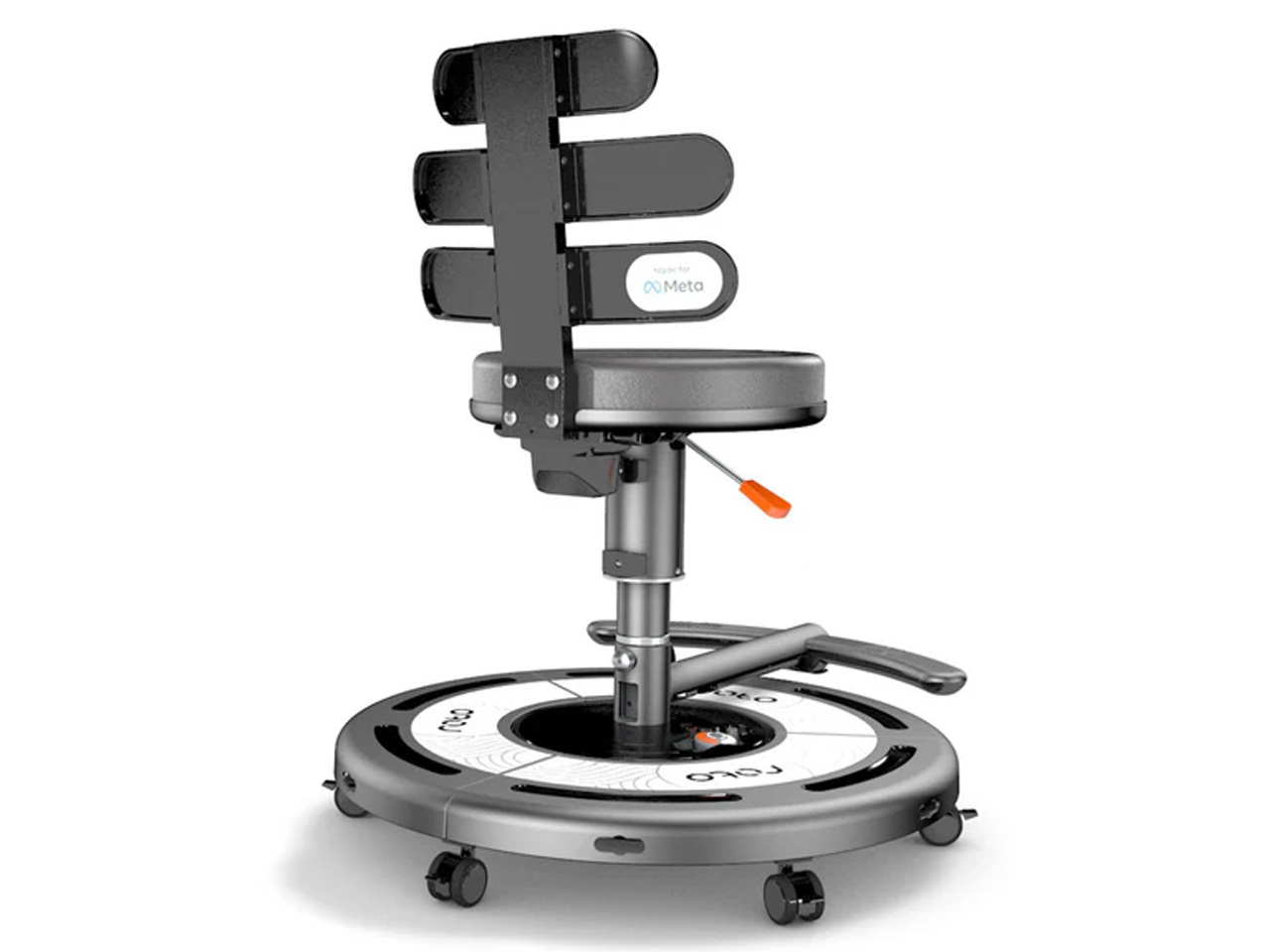
The Roto VR Explorer chair is attached with two pedals – right above its base – for running simulation. Of course, the chair does not vouch to eliminate motion sickness entirely; VR users will still experience nausea moving back and forth. If you think, the chair deserves a chance in your VR environment, you can now preorder it at £799. Delivery will begin in October 2024.
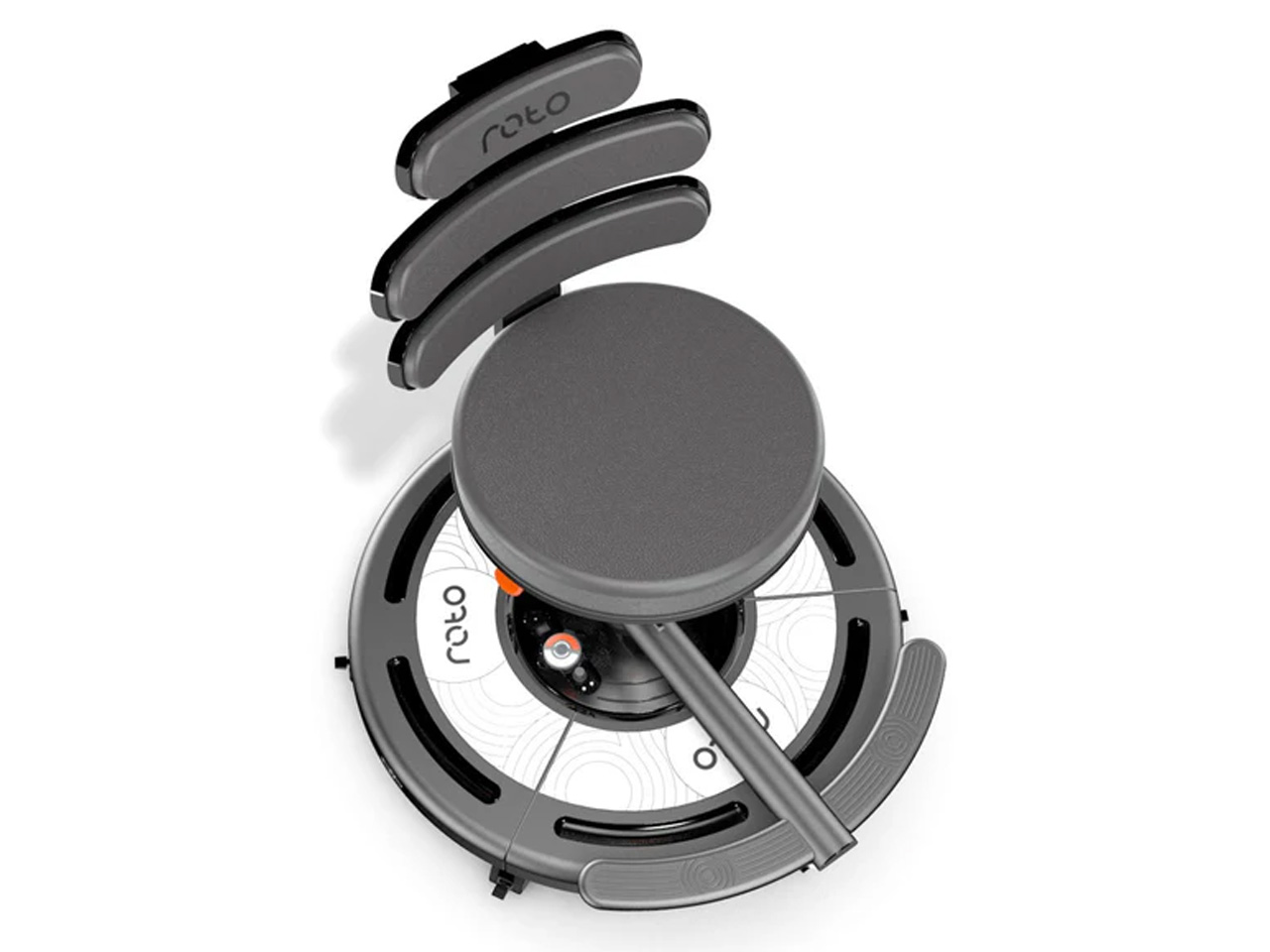
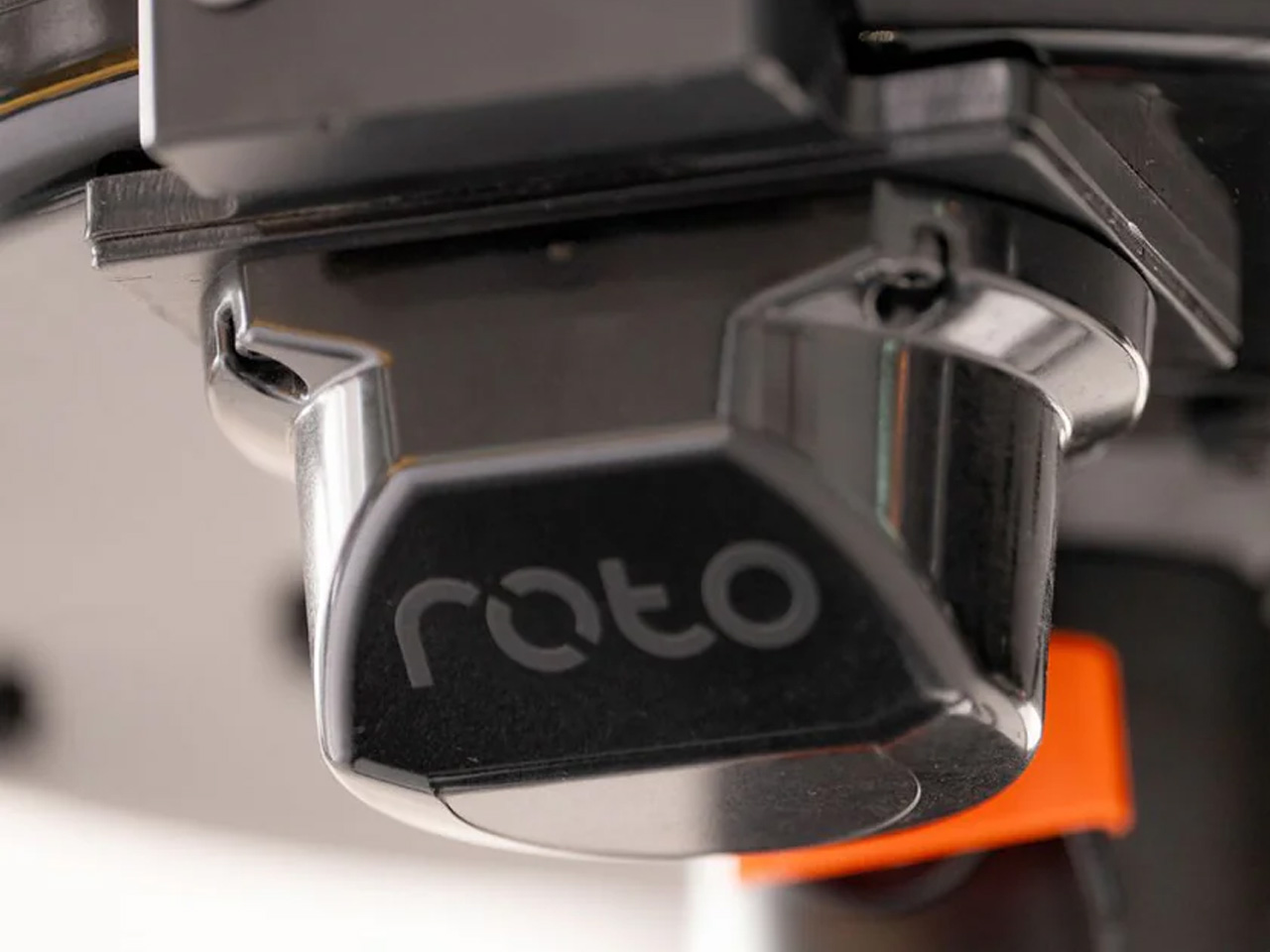
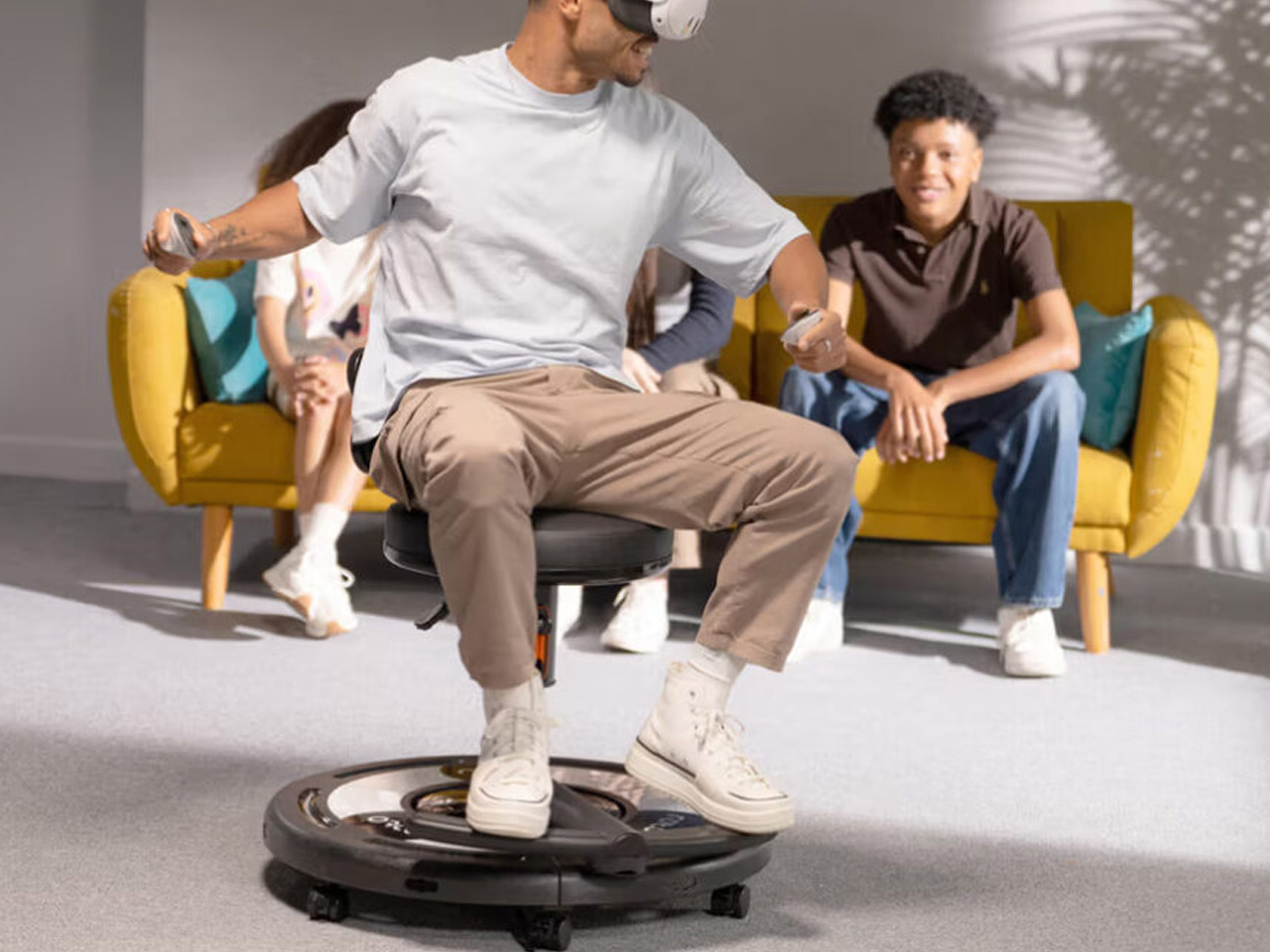
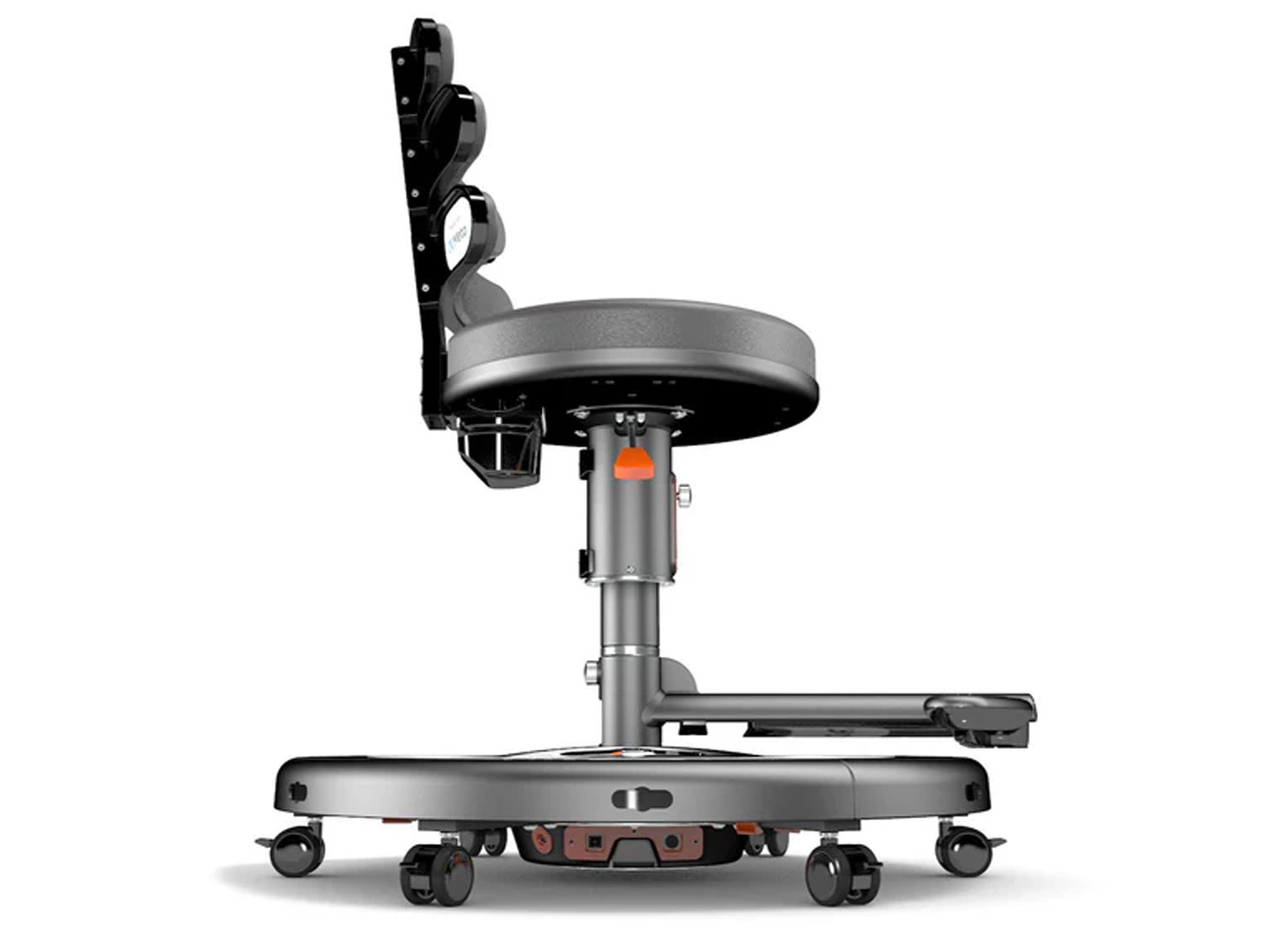

The post Meta approved Roto VR chair rotates with your head movements to makes gameplay immersive first appeared on Yanko Design.
Pimax Crystal VR Headset
What is the Pimax Crystal VR Headset?
The Pimax Crystal VR headset is a cutting-edge device designed to offer one of the most immersive virtual reality experiences available on the market. It boasts an impressive 5760×2880 resolution, which means 2880×2880 pixels per eye, providing crystal clear visuals that enhance user immersion, especially in simulation games like flight and racing. The headset also features a wide field of view (FOV), up to 140 degrees with different lens options, which significantly reduces the typical “goggle effect” seen in other VR headsets and broadens peripheral vision.
Who is it Targeted At?

This headset is tailored for VR enthusiasts and hardcore gamers who crave the highest fidelity visuals and immersive experiences, especially those interested in simulation games. The high hardware requirements and premium price point make it best suited for users who are willing to invest in top-tier equipment to maximize their VR experience.
Similar Products
The Pimax Crystal competes with other high-end VR headsets like the Valve Index, HTC Vive Pro 2, and HP Reverb G2, each offering various strengths in display quality, tracking capabilities, and ecosystem support. However, the Pimax Crystal sets itself apart with its superior resolution and field of view.
Things to Consider

Before investing in a Pimax Crystal VR headset, consider the following:
- Hardware Requirements: The Pimax Crystal requires a powerful PC to drive its high-resolution display effectively. Users need at least an RTX 2070 or better GPU for optimal performance, which means potential additional investment in a gaming PC setup.
- Comfort and Design: Some users have noted that the headset, while offering customizable comfort options like adjustable straps and optional face foams, can be bulky and might feel heavy during long gaming sessions. Additionally, users wearing glasses might find it challenging to adjust the headset for comfort.
- Software and Ecosystem: The Pimax ecosystem, while growing, does not offer as many native apps and games as other platforms like SteamVR or Oculus. This may limit access to popular VR titles unless they are compatible through other VR software platforms.
- Price: As one of the more expensive options on the market, potential buyers should weigh the advanced features and specifications against their budget and usage intentions to determine if the investment is justified for their needs.
Overall, the Pimax Crystal VR headset represents a significant leap forward in VR technology, offering unparalleled visual fidelity and an immersive experience that can be a game-changer for enthusiasts willing to meet its demands?
The post Pimax Crystal VR Headset appeared first on OhGizmo!.
In-Car VR Entertainment Solutions that Promise to Eliminate Motion Sickness
In-car entertainment is gaining importance given the substantial time people spend in vehicles, whether daily commutes, long-distance trips, or leisure journeys. This time can feel unproductive or monotonous, particularly for passengers. Additionally, extended travel can cause discomfort and motion sickness. Car motion sickness often arises from a mismatch between the motion perceived by the eyes and that sensed by the inner ear. This is particularly common when reading or focusing on a stationary object within a moving vehicle.
Designer: holoride

holoride aims to provide engaging in-car entertainment while addressing the common motion sickness problem. It does this through innovative virtual reality synchronized with the vehicle’s motion. By matching the virtual experiences with the car’s real-world movements, holoride creates a cohesive perception of motion. For example, the virtual environment reflects this movement if the vehicle turns. This helps the brain align visual and sensory inputs, reducing the conflict that often causes motion sickness.

The immersive experience of VR entertainment provided by holoride significantly distracts from the monotony or discomfort of travel. Passengers can immerse themselves in a virtual world that moves in sync with the car, transforming the travel experience into an engaging and enjoyable activity. This is especially beneficial on long journeys, where potential hours of boredom or discomfort can be converted into time spent exploring virtual landscapes, playing games, or engaging in other interactive VR experiences.

I first experienced Holoride’s technology at CES 2019. Audi drove me around the Las Vegas Speedway while I played a special demo created by Disney Games and Interactive Experiences. The experience gave me the impression that holoride was on the verge of revolutionizing in-car entertainment by integrating virtual reality (VR) with the car’s movements. The test system utilized Oculus Rift VR glasses, providing a uniquely immersive experience. The initial trial featured a game developed by Disney Games and Interactive Experiences, “Marvel’s Avengers: Rocket’s Rescue Run,” which I played in a virtual space as the car moved.

holoride’s technology uses the car’s telemetry data to sync the VR experience with real-time car movements, such as turns, acceleration, and braking, creating a seamless blend of the real and virtual worlds. This synchronization helps to minimize motion sickness, a common issue when using VR in a moving vehicle.
One of the exciting features of holoride is its adaptability. The duration of the VR experience can stretch or shrink to match the length of the car journey, making each ride a unique adventure. Beyond just entertainment, it can also offer educational experiences based on the journey’s location.

Though holoride was born within Audi, it’s not exclusive to the automaker and isn’t fully owned by Disney. The plan is to invite additional investors and open the platform to other content creators and automakers. It also has potential for use in autonomous vehicles, and the experience could be enriched by integrating data from the vehicle’s sensors.

In its early stages, holoride aims to enhance the passenger experience, transforming every car ride into a unique adventure. As the platform evolves and attracts more developers, the possibilities for in-car VR experiences are expected to expand significantly.
So, where’s holoride today? holoride, the Munich-based tech company, announced the release of its holoride retrofit device at CES 2023. This product is a compact device that turns any vehicle into a platform for extended reality entertainment. The company recognized as a 2023 CES Innovation Awards honoree, has made its mark in the industry by integrating virtual reality (VR) and real-time vehicle data.

The holoride retrofit device is about the same size as a typical smart speaker. It connects to a VR headset via Bluetooth and uses movement and location data to create adaptive virtual experiences that respond to a vehicle’s movements in real-time. This data-driven approach creates a dynamic experience that helps mitigate motion sickness.

Nils Wollny, CEO and co-founder of holoride said that the retrofit device brings them closer to their goal of making every vehicle a portal into holoride’s immersive world. “Any vehicle can serve as your gateway into holoride’s adaptive virtual experiences where each new ride becomes the blueprint for your next immersive adventure,” Wollny said.
In conjunction with the launch of the retrofit device, holoride also announced an addition to their content library. Subscribers will now have access to a new game, Pixel Ripped 1995: On the Road, from Emmy Award-winning studio ARVORE. The game takes place in a car during a family road trip and is available to all holoride subscribers.

The holoride retrofit device weighs less than half a pound and can be mounted on a vehicle’s windshield. It boasts a 14-hour battery life and can simultaneously connect to two headsets. The device is priced at $199, with a bundle option available for 699€/$, including a HTC VIVE Flow headset, and includes a 3-month holoride subscription and 3-month access to VIVEPORT Infinity Vista.
The post In-Car VR Entertainment Solutions that Promise to Eliminate Motion Sickness first appeared on Yanko Design.